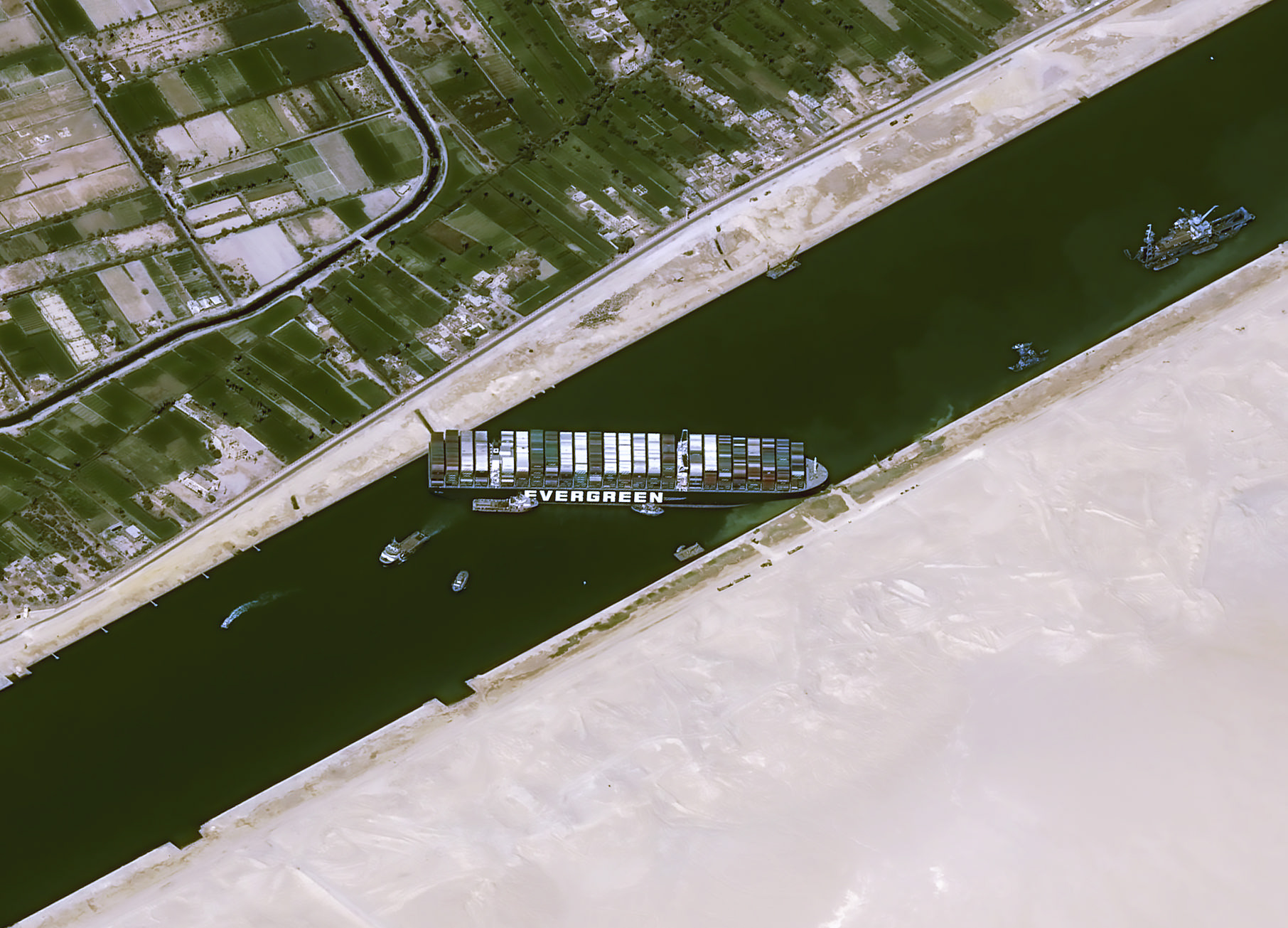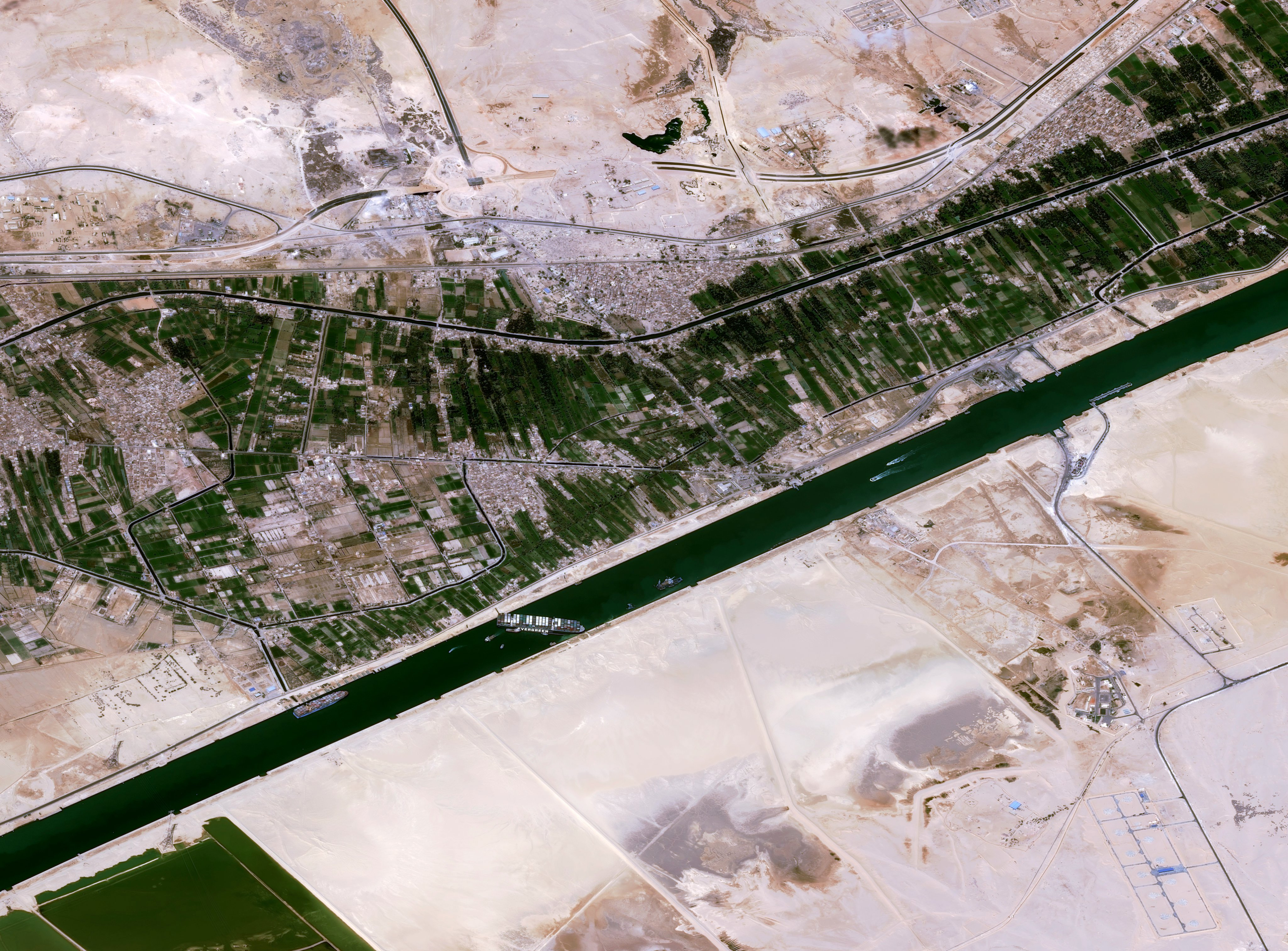The huge ship stuck in the Suez Canal is visible from space (satellite photos)
A massive container ship's embarrassing and inconvenient predicament is visible from space.
Tiny Earth-observing Dove satellites operated by San Francisco-based company Planet have spied the giant cargo ship that's blocking Egypt's Suez Canal, as well as the traffic jam caused by the huge vessel's plight. The Airbus-built Pleiades Earth-observing satellite also captured a stunning close-up of the stuck ship early Thursday morning (March 25).
The 1,300-foot-long (400 meters) ship, called Ever Given, ran aground while traversing the canal on Tuesday morning (March 23). It's now lodged sideways across the Suez, preventing other ships from coming or going along this busy trade route that connects the Mediterranean and Red seas.
Related: Photos of Earth by Planet satellites
Dredging crews, salvage operators and other personnel are working hard to free the Ever Given, but it may take weeks to open the canal to ship traffic again, NPR reported on Thursday (March 25).
Planet managed to give the world a bird's-eye view of the maritime mess with its fleet of Doves, shoebox-sized cubesats that are capable of resolving features as small as 10 feet wide (3 meters) on Earth's surface.
Dove imagery captured on Wednesday (March 24) provides a relative close-up of the beached Ever Given, for example. And wider-view photos snapped on Thursday show the mired ship and a queue of cargo vessels, which are waiting to enter the blocked canal from the Red Sea.
Breaking space news, the latest updates on rocket launches, skywatching events and more!
The view from Airbus' Pleiades satellite taken early Thursday morning shows even more detail, with container ship clearly visible. Individual containers on the ship can be discerned in the high-resolution view.
More than 350 Planet satellites have reached orbit to date, and more than 150 are operational at the moment. This number fluctuates often, because the company regularly launches new versions of its eyes in the sky and de-orbits older models.
The vast majority of Planet's orbiting craft are in the Dove family, though the company also operates a small constellation of larger, sharper-eyed SkySat satellites. The company sells the imagery captured by these spacecraft to a variety of customers but also routinely releases photos free of charge, especially those that are in the public interest.
Planet has made freely available images that can inform the response to earthquakes and other natural disasters, for example. The company also released pictures that captured the aftermath of Iranian missile attacks on Iraqi military bases in January 2020.
Mike Wall is the author of "Out There" (Grand Central Publishing, 2018; illustrated by Karl Tate), a book about the search for alien life. Follow him on Twitter @michaeldwall. Follow us on Twitter @Spacedotcom or Facebook.

Michael Wall is a Senior Space Writer with Space.com and joined the team in 2010. He primarily covers exoplanets, spaceflight and military space, but has been known to dabble in the space art beat. His book about the search for alien life, "Out There," was published on Nov. 13, 2018. Before becoming a science writer, Michael worked as a herpetologist and wildlife biologist. He has a Ph.D. in evolutionary biology from the University of Sydney, Australia, a bachelor's degree from the University of Arizona, and a graduate certificate in science writing from the University of California, Santa Cruz. To find out what his latest project is, you can follow Michael on Twitter.




